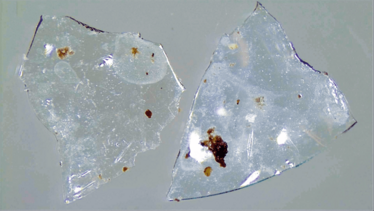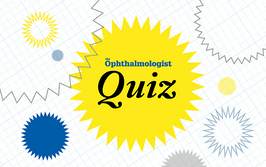Bitesize Breakthroughs
Analyzing the tear film layer, screening for neural disease, and a curious contact lens case: a brief selection of the latest ophthalmology news
Eye Spy
- A team at Seoul National University, South Korea, has linked thinning of the retina with Parkinson’s disease (1). In patients with early stage Parkinson’s disease, the team identified retinal thinning, and found that it correlated with disease severity and may be linked with an increased loss of dopamine-producing brain cells. Looking to the future, the authors hope this study may help neurologists detect Parkinson’s in its earliest stages with a simple eye scan.
Dry Eye Developments
- Using advanced mass spectrometry techniques, a team of Australian researchers have characterized ultra-long-chain fatty acids from human meibum. The team from Queensland University of Technology in Brisbane are now working with Allergan, who co-founded the research, to incorporate a synthetic long-chain lipid chain into future dry eye treatments (2).
D for Diagnosis
- Researchers at the University of Washington, Seattle, USA, have uncovered potentially promising screening criteria for Alzheimer’s disease. By analyzing a population of 3,855 patients, they identified a significant association between the disease and three common eye conditions – AMD, diabetic retinopathy and glaucoma (3).
RP Revelations
- Birch et al. (4) have published findings showing that oral valproic acid was no better than placebo for the treatment of autosomal dominant retinitis pigmentosa (ADRP). In the randomized Phase II multicenter placebo-controlled trial, 37 patients with ADRP were treated for 12 months with 1,000 mg or 500 mg valproic acid; 42 patients were administered placebo. Valproic acid failed to meet its primary endpoint – change in visual field area between baseline and 12 months. The authors noted that one scientific premise for the study was the “concern that patients with RP were taking off-label valproic acid without adequate monitoring.”

Contact lenses recovered from treated sewage sludge which, according to new research findings, could harm the environment (6).
Contact Lens Concerns
- In a curious case, a 42-year-old patient presenting with eyelid swelling and ptosis has had a contact lens removed from her eyelid – 28 years after it became embedded there (5). According to the authors, the patient believed that the lens had been lost at the age of 14 when she was hit in the eye with a shuttlecock during a game of badminton. The authors report it isn’t clear why the lens resided in the eyelid asymptomatically for 28 years.
- According to findings presented at the American Chemical Society annual meeting, disposable contact lenses are an emerging environmental contaminant (6). As 15–20 percent of contact lens wearers reported flushing their lenses down the toilet or sink, it might be time to check how patients are disposing of their disposables...
- J Ahn et al., Neurology [Epub ahead of print] (2018). PMID: 30111550.
- SE Hancock et al., J Lipid Res., 59, 1510-1518 (2018). PMID: 29907595.
- CS Lee et al., Alzheimers Dement., [Epub ahead of print] (2018). PMID: 30098888.
- DG Birch et al., “Effect of oral valproic acid vs placebo for vision loss in patients with autosomal dominant retinitis pigmentosa”, JAMA Ophthalmol, 136, 849–856 (2018). PMID: 29879277.
- S Patel et al., BMJ Case Rep, (2018). PMID: 30097548.
- American Chemical Society. “The environmental cost of contact lenses”. Available at: bit.ly/ACSLens. Accessed: August 20. 2018.

I’ve always loved telling stories. So much so, I decided to make a job of it. I finished a Masters in Magazine Journalism and spent three years working as a creative copywriter before itchy feet sent me (back)packing. It took seven months and 13 countries, but I’m now happily settled on The Ophthalmologist, where I’m busy getting stuck into all things eyeballs.













